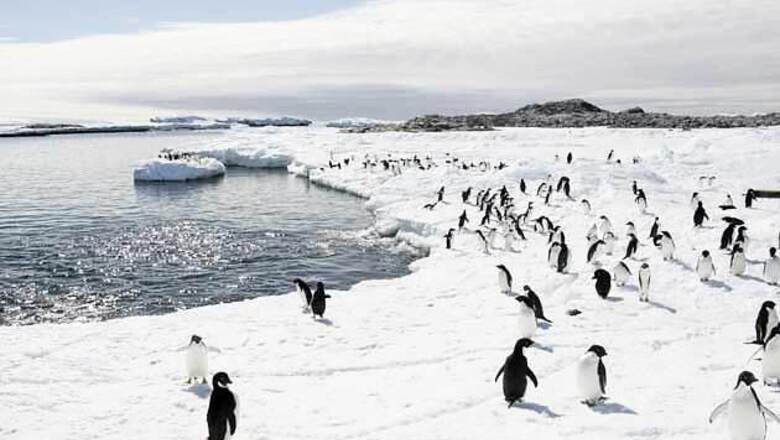
views
Sydney: Scientists have identified 15 distinct regions of Antarctica and its near-shore islands, based on the geography, geology, climate, flora and fauna of the ice-free areas, including the biologically distinct Antarctic Conservation Biogeographic Regions.
Australian Antarctic Division terrestrial biologist Aleks Terauds, who led the study, said this is the first time a continent-wide assessment of the biogeography of Antarctica has been made using all of the available biodiversity data.
"The new research amalgamated 38,000 terrestrial records, including the diverse biology such as microbes, invertebrates and plants. It revealed a complex ecosystem which can be divided into 15 very distinct and potentially delicate biogeographic regions which are characterised by different climates, landscapes and species," Terauds said.
"Previously terrestrial Antarctica has been divided into two main areas based on aspects like geography geology or specific types of biodiversity," Terauds said, Diversity and Distribution Journal reports.
Introduced species are identified as one of the biggest threats to the Antarctic terrestrial ecosystems, particularly in a warming climate, according to an Australian Antarctic statement.
"With about 40,000 people visiting Antarctica over a summer, as tourists, scientists or station support personnel, there's the potential that more species will be accidentally transferred to and within Antarctica."
"While quarantine procedures are already in place for inter-continental travel, such as cleaning clothing and equipment before arriving in Antarctica, there are less biosecurity measures for intra-continental movement," he said.
"The Antarctic Conservation Biogeographic Regions represent an important basis for biosecurity measures to manage the risk of species, including species native to Antarctica, being transferred from one biogeographic zone to another."
Terauds presented the new research at the Scientific Committee on Antarctic Research lecture at the Antarctic Treaty Consultative Meeting in Hobart, Australia.




















Comments
0 comment